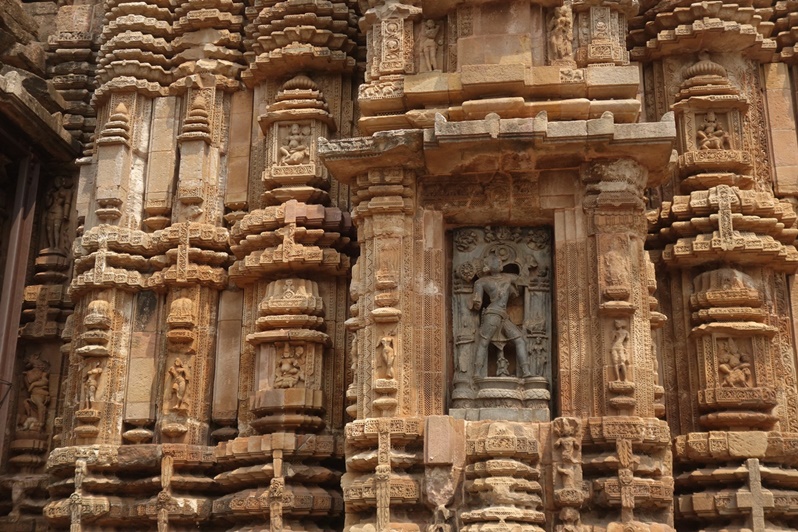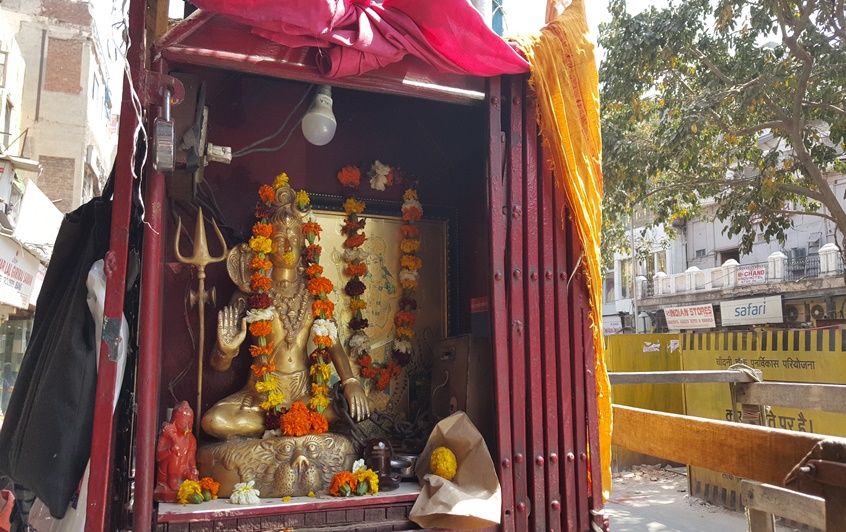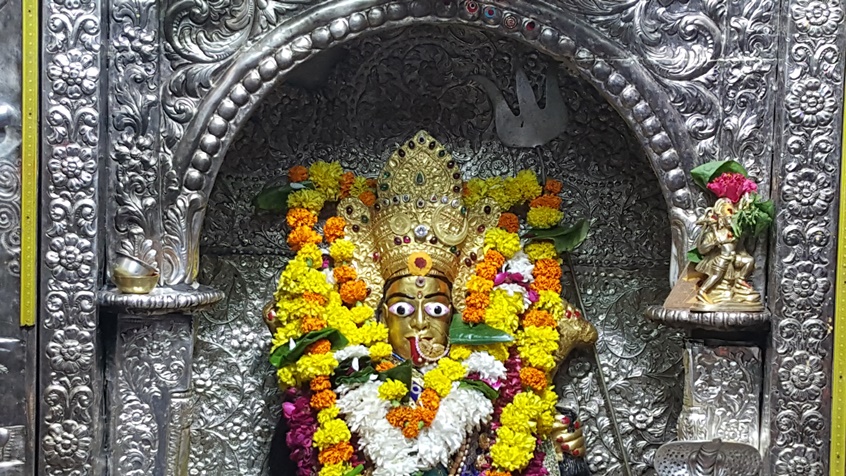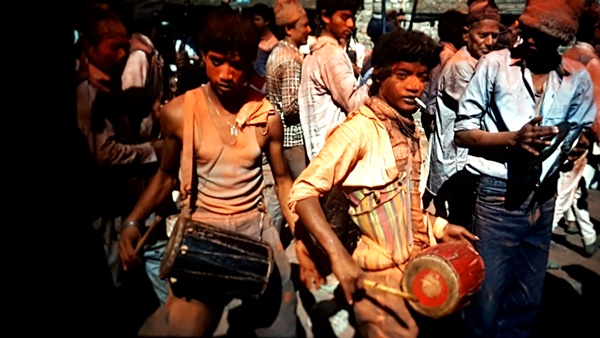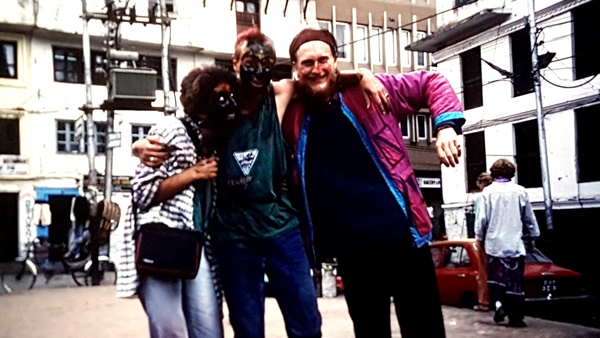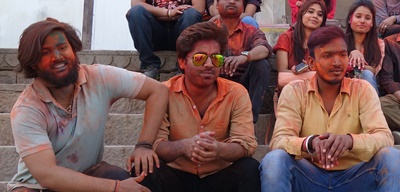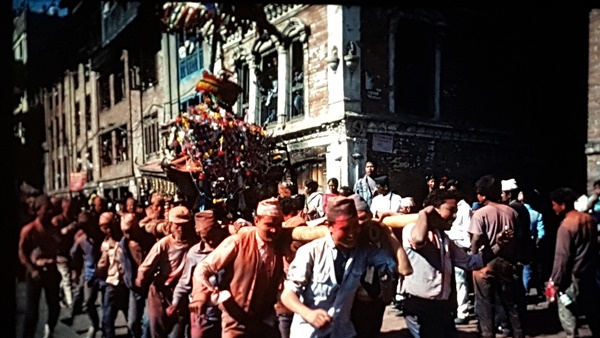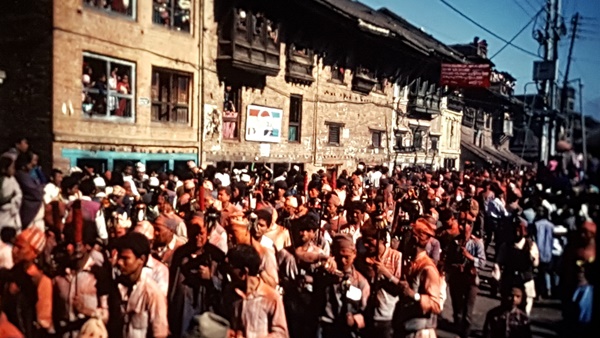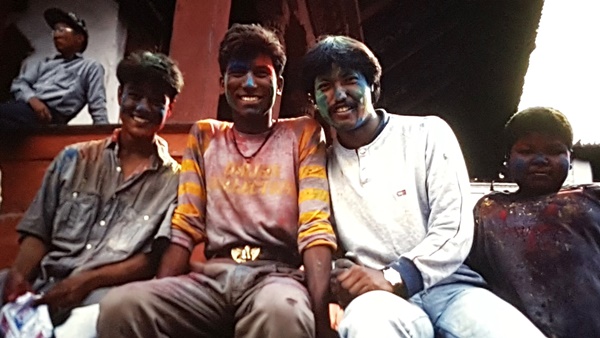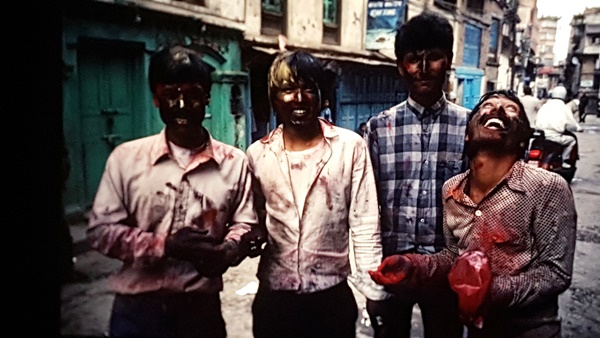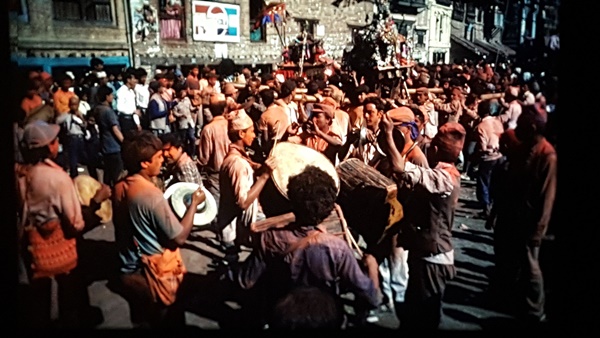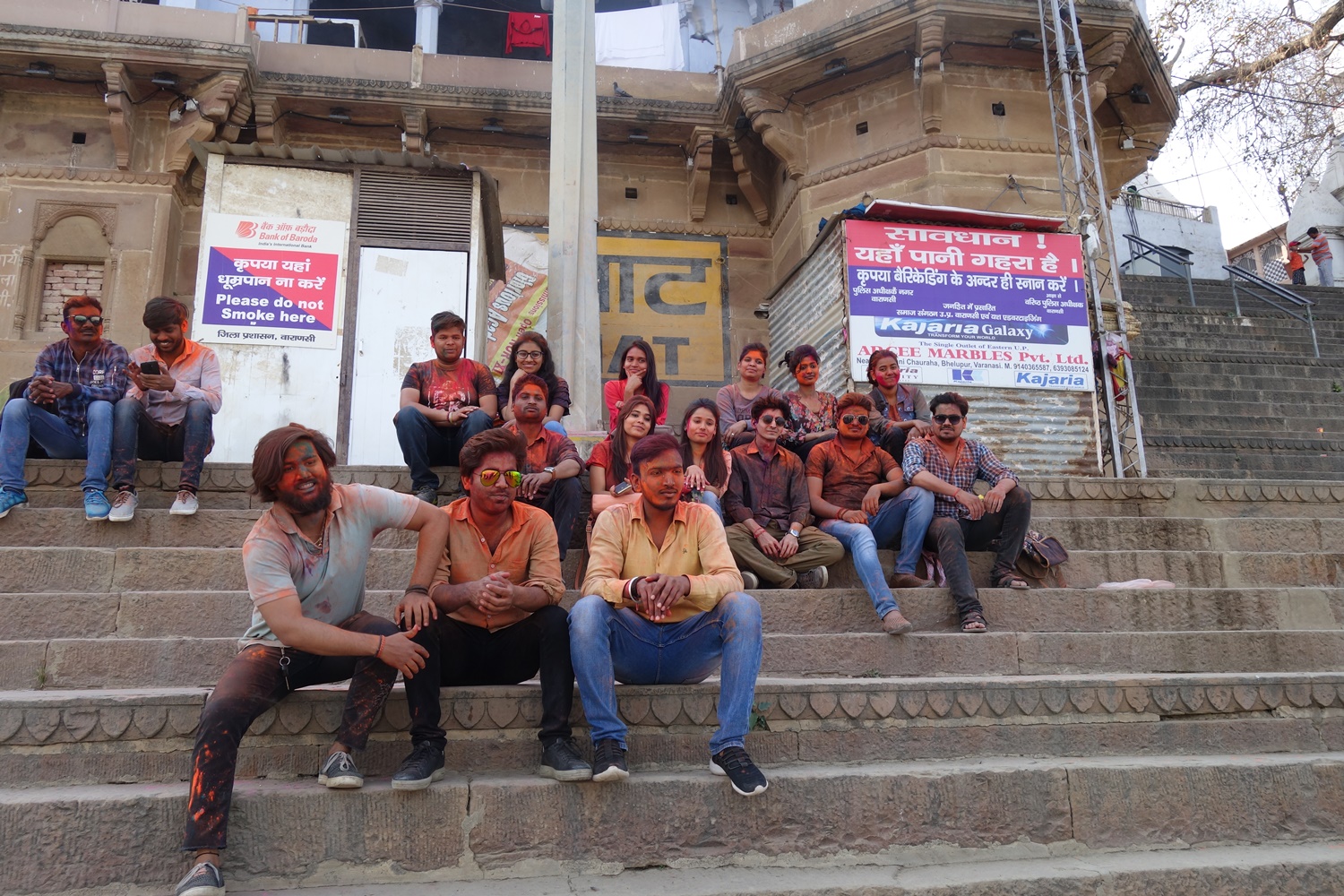
par Bertrand Bellaize, le 16 décembre 2022
Hindouisme, Holi, le festival du printemps en Inde
Holi Haî, c’est Holi ou pour citer la phrase en entier : Bura na mano, Holi hai : ne soyez pas fâché, c’est Holi. C’est ainsi qu’un indien souriant m’a interpellé après m’avoir lancé un ballon de baudruche rempli d’eau colorée sur la tête. Me voici donc dégoulinant, trempé et tout rose et c’est normal, c’est Holi, la fête du printemps.
Un festival haut en couleurs
Depuis plusieurs jours, je sens monter l’effervescence : les marchands préparent de nombreux petits sacs plastiques contenant les poudres de couleurs qui viennent égayer les boutiques alimentaires, les bazars…. Les enfants sortent leurs pistolets à eau. L’atmosphère générale change, je sens de la légèreté, de la malice, une énergie se déployer.
Puis le grand jour arrive, toutes les échoppes, restaurants, vendeurs de thé, marchands de rue, tout est fermé ! La rue appartient à la fête.
Le jour de Holi (cette année le 29 mars) tout est permis (ou presque) : plus de barrières liées aux castes, liées au statut social, à la religion… ce jour, tous les gens sont égaux, chacun peut se moquer, être insolent, arroser, couvrir de poudre de couleurs n’importe qui, n’importe où dans l’espace public. Pas de limites, levée des interdits. Les frustrations peuvent s’évacuer.
Gare ! Les poudres, l’eau colorée peuvent surgir de partout et nulle part : d’une fenêtre, d’un toit en terrasse et les enfants ne sont pas en reste. Attention si un groupe de jeunes gens turbulents arrivent à votre rencontre, n’essayez pas de les convaincre que vous avez mis votre plus belle chemise…. Vous finissez coloré des pieds à la tête ! C’est Holi, happy Holi ! (joyeux Holi).
A Bharatpur ou à Barsana, les femmes ont même le droit de frapper à coup de bâton les hommes !
Voir l’article sur l'excellent blog de Magik india sur Holi https://magikindia.com/fr/holi-india/
Voilà une belle occasion de vivre un grand moment de convivialité avec les indiens, de chanter, de faire la fête au rythme des tambours et des hauts parleurs déversant la musique à grands renforts de décibels.
Pour les indiens, les voisins, la famille Holi est aussi un moment de réconciliation, de pardon si besoin.
Parfois ce défoulement va trop loin, et malheureusement j'ai rencontré des familles qui ne sortaient plus le matin de Holi par peur des débordements, des hommes qui ont abusé d'alcool et (ou) ont eu une forte consommation de Bhang, une boisson contenant du cannabis et qui peuvent devenir violents.
La soirée est beaucoup plus calme, elle est consacrée aux proches, aux amis, à la famille et l’occasion d’un partage intime, d’échanges de sucreries, de douceurs.
Holi, la victoire du bien sur le mal
Holi vient de Holika, le nom de la sœur du roi démon Hiranyakashy : ce roi se voyait l’égal des dieux et demanda à ses sujets de le vénérer en tant que tel ! Mais son fils Prahlada refusa ! Alors Hiranyakashy convainquit sa sœur Holika, qui était immunisée contre le feu, de convaincre Prahlada de s’asseoir avec elle sur un bûcher : mais Vishnou intervint, sauva Prahlada et Holika fut réduite en cendres.
Ainsi la veille de Holi, de nombreux feux sont préparés et allumés : une puja (rituel) est célébrée en l’honneur de Prahlada : une branche de bois vert le symbolisant est placée au centre du feu, entourée d’offrandes, honorée d’aspersions d’eau, de chants de mantras… Elle est retirée juste avant de s’enflammer tandis que le bois sec ou une effigie représentant Holika se consume ! C’est la victoire du bien sur le mal.
Des gerbes de blé sont passées au dessus des flammes et conservées dans la maison afin de procurer abondance.
Holi, la fête du renouveau
Holi célèbre aussi la victoire de Krishna, lorsqu’il était enfant, sur la démone Pootana : dans cette symbolique, Pootana est associée à l’hiver et sa mort annonce sa fin et donc le printemps.
Le printemps symbolise le renouveau, l’élan de vie, l’expansion : Holi fête donc aussi l’amour et les divinités liés au désir, la passion. Au nord de l’Inde Krishna et Radhas, les célèbres amants divins qui représentent la communion, le Un sont honorés. Holi reprend l’épisode où Krishna recouvre de couleurs, les fameuses Gopis, les bergères et c’est à Brindavan que la fête est la plus intense.
Au sud,c’est Kama, le dieu du désir et sa compagne Rati et leur compagnon Vasanta, le printemps qui font l’objet de toutes les dévotions.
Holi, une fête qui renforce le lien social
Cet aspect festif revêt un sens social profond : Holi est l’occasion d’un grand brassage entre les hindous sans distinction sociale mais aussi et surtout entre les fidèles de différentes religions : hindous, musulmans, sikhs, les différences et les différends n’existent plus. C’est une opportunité pour les Indiens d’aller au-delà de leur rancoeur surtout en cette époque de fortes tensions en Inde entre les différentes communautés religieuses, notamment entre les hindous et les musulmans.
C’est peut être aussi la raison pour laquelle cette fête de Holi se déploie dans le monde entier, Etats Unis, Royaume Uni... Elle apporte une dimension d’ouverture, d’accueil.
Les couleurs utilisées ont une signification primordiale : le vert symbolise l’harmonie, l’orange, l’optimisme, le bleu, la vitalité, le jaune, la foi et le rouge la joie et l’amour !
Autrefois, ces poudres d’origines végétales avait aussi un rôle médicinal : collées à la peau, elles s’imprégnaient sur tout le corps et diffusaient leurs heureuses vertus. Malheureusement aujourd’hui, en Inde, c’est l’effet inverse qui se produit, d’origine chimique, elles peuvent provoquer des irritations.
Cependant l’essentiel reste la fête, les sourires, la joie, l’ambiance qui se dégage lors de Holi. Ces couleurs, tout autant que la danse, la musique... ont un impact sur le moral : au sortir de l’hiver, elle donne de l’optimisme, dynamise l’énergie.
Alors, joyeux Holi à tous !!
